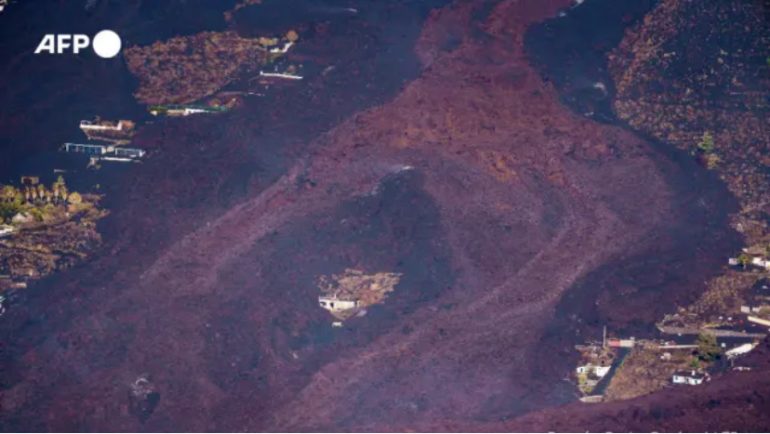The lava of the volcano, which entered an explosive phase ten days ago on the island of La Palma, in the Spanish archipelago of the Canary Islands, finally reached the ocean on Tuesday night to Wednesday, a phenomenon that worries experts, who explain that it is possible
The development was announced shortly after 23:00 (local time; 01:00 Greek time) by the Canary Volcanology Institute (INVOLCAN). "The lava flow reached the sea in Playa Nueva," INVOLCAN explained via Twitter.
Lava from an erupting volcano in the Canary Islands has reached the ocean, volcanologists say, raising fear of toxic gases being released as the lava hits the sea waterhttps://t.co/wGb12R3ATE pic.twitter.com/aj96cqyWek
- AFP News Agency (@AFP) September 29, 2021
Footage broadcast by a regional television network in the Canary Islands, a Spanish archipelago off the northwest coast of Africa, shows glowing lava entering the water as a large amount of steam rises.
The Kubre Vieha volcano entered an eruptive phase on 19 September.
Yesterday afternoon, the lava, the speed of which had been changing in recent days and had almost stopped at some point, was still 800 meters from the sea and it was impossible to predict if and when it would reach the ocean.
The mixing of lava, molten rock and other materials with a temperature of more than 1.000 degrees Celsius with seawater, which has a temperature of 20-25 ° Celsius, raises concerns because it will likely release toxic gases and harmful microparticles dangerous to the human.
For this reason, the authorities of the archipelago imposed a "2 nautical mile exclusion zone" around the point where the lava was supposed to reach the water.
Toxic gas
On Monday, residents of several neighborhoods in Tathakorte, a village near the coast, were ordered to close their homes to protect themselves from possible toxic gas emissions as the lava reached the sea.
The decision was due to the "possibility" that the magma would cause the release of "potentially toxic gases", explained Miguel Μngel Morquente, technical director of the Canary Volcano Emergency Response Plan (PEVOLCA).
No data are yet available on the amount of toxic gases produced and how dangerous the condition is.
The lava flowed into the sea hours after the Spanish government released $ 10,5 million to help those affected, especially to provide shelter to those who saw the lava swallowing their homes.
A state of natural disaster was declared on the island of 85.000 inhabitants, where lava flows destroyed a total of 656 buildings - not all of them houses - and covered some 2.680 acres of land, according to the European Copernicus Earth Observation System.
The lava also destroyed many roads. Canal Governor Βngel Victor Rότεtes estimated last week that the damage would exceed 400m euros and hinted that he was counting on European funds for reconstruction.
The eruption did not cause any deaths or injuries, but made it necessary to evacuate 6.000 people from their homes.
After the explosive activity began, a huge column of smoke was released from the volcano, reaching hundreds of meters in height, as well as ash.
The accumulation of volcanic ash caused problems in the movement of the aircraft. Seven domestic flights were canceled on Friday, after which the airport was closed. Although it has officially reopened, flights have been suspended for the time being.
Experts expect that the phase of explosive activity can last several more weeks, even months.
Two previous volcanic eruptions in La Palma occurred in 1949 and 1971. They caused a total of three deaths, two due to inhalation of toxic gases.
Like other islands in the archipelago, La Palma's economy is based on banana cultivation and tourism.
Source: Protothema.gr
